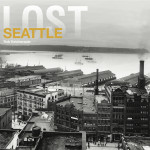A small electronic organ company suddenly has the ability to recreate historic figures as near-living androids. Humanity is plagued by mental illness, and one out of four people have been institutionalized. A cold, methodical billionaire has brilliantly sold speculative land holdings on planets across the solar system. This novel examines the definitions of sanity and life, forcing the characters and readers to question their humanity.
Serialized in magazines starting in 1968, "We Can Build You" was written by Philip K Dick just after "Do Androids Dream of Electric Sheep" (filmed as Bladerunner), and features characters and themes from the earlier work. I'm interested how this plays out as a prequel. Is it merely a similar story, set in an earlier time, with similar characters? Or is it really a prequel, and we'll be left with the stage set for the collapsed world of Bladerunner?
*****
7/1
What an odd book.
So, it was really written in 1962, and published several years later. It actually preceded "Do Androids...", and it serves as a precursor to that book and I think "A Scanner Darkly" as well.
The first half of "We Can Build You" is focused on the simulcra (androids), the definition of humanity, and moves by Rosen & Rosen Associates to cash in on their discovery and populate space with them. Throughout this half of the book I wondered if perhaps additional characters were simulcra, like "Do Androids..", and how events would fall into place that lead to Deckard's world. It was easy to imagine.
The second half turns the story upside down. The unstable sanity and desperate emotions of the human characters had been used as a contrast to the simulcra, to frame the questions on what defines life. In the second half, though, these move to the forefront as the protagonist descends into dimentia and is finally institutionalized. It becomes more of a question of sanity and normality, and the androids become background. These concepts, plus the detatched, unattainable woman, were explored much more thoroughly and expertly in "A Scanner Darkly" about ten years later.
I liked this book. If I had read it in high school or college, the conversations on love and almost sado-masochistic attraction to the wrong person would have really resonated with me. Even without that drawing me in, it's full of thought-provoking passages and provides an interesting link between several other novels.
Here's a passage about Seattle that really matched my impression on my recent return visit:
"It's an old seaport town built on hills, with windy, canyon type streets; nothing is modern except the public library, and in the slum part you'll see cobblestone and red brick, like parts of Pocatello, Idaho. The slums extend for miles and are rat-infested. In the center of Seattle there is a prosperous genuine city-like shopping area built near one or two great old hotels such as the Olympus. The wind blows in from Canada, and when the Boeing 900 sets down at the Sea-Tac Airfield you catch a glimpse of the mountains of origin. They're frightening."
It's strange, because this was written in an alternate future of 1962, and it's fundamentally wrong - there are no extensive slums - and yet it's still true. If there had been no Microsoft boom in Seattle, this is what it could be like. Before Belltown, before the Convention Center expansion, before Benaroya Hall and all of the 90s prosperity, that's where Seattle was headed. Step back even further, before the speculative over-construction of office buildings in the 80s, and Dick's Seattle is just a stone's throw away. Now I'm looking forward to re-reading "Do Androids..." and comparing the four Seattles (now, then, false now, false future).

